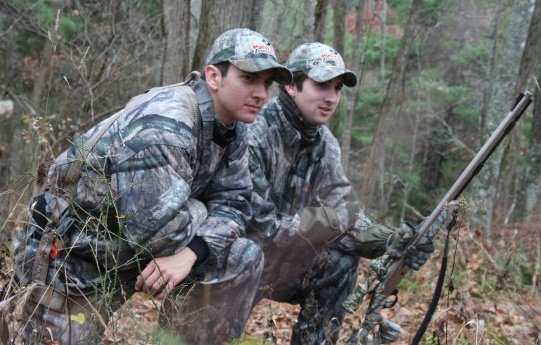Have you ever been driving along the interstate and become completely engulfed in the scenery of the rugged mountains, the rolling hills or the endless plains? I absolutely love my drive home from
Charlottesville as the distant mountains come closer with each passing minute. And, in my child hood and teenage years, I left it at that. I found a great deal of pleasure in simply viewing these mountains and accepting them only for their aesthetic value. You know what, though? I was missing it all.
I’ve deer hunted since I was 9 years old. Just like any hunter, I’ve had my successes and I’ve had my failures. When I was younger I enjoyed the hunt, but I also enjoyed when it was over. I liked being in the woods, but if the woods were quiet and the deer weren’t moving, I became apathetic and more interested getting to get back to the camp where a warm fire and family awaited. Again, I was missing it all.
In the past couple of years I’ve learned more about myself and nature than ever before. Why should I relish in the mountain’s distant beauty when I can be a part of the mountains themselves? And leaving the stand early? Well let’s just say every time I spent those hours in the camp I missed the greatest show on earth.
let’s just say every time I spent those hours in the camp I missed the greatest show on earth.
As “small” as Chestnut Ridge may be, I love running its ridges, hollows, banks and creeks. And while 3 years ago I may have been content viewing them from a distant, I know take every chance I get to be a part of the mountains and experience God’s wonderful creation first hand. And while a distant viewer may have no idea that I’m there, that’s the only way I’ll have it. God’s mountains engulf me just as his love engulfs us all.
As far as leaving the stand early, one thing I’ve grown to understand is that the woods are never quiet. Be it an ant crawling up the oak to which my stand is attached, or the slow movement of the shadows as the distant sun travels its daily course, there is always the opportunity to see something that has never been seen before. Each morning that I climb into my stand and watch the sun come up over the adjacent ridge I am seeing God in work from an angle that no one else will ever have a chance to see. This past hunting season some of my most successful mornings were deerless and “quiet.” And while the opportunity at a Booner may take my heart rate from 0-60 in a second, I know that no matter how many deer I see or don’t see, I’m eternally blessed to be able to experience God in such a genuine way each time I step foot into the deer woods.
I’ll leave you with a thought from the original deer hunter himself:
"When a hunter is in a tree stand with high moral values and with proper hunting ethics and richer for the experience, that hunter is 20 feet closer to God" -Fred Bear
 didn't have any luck one could say, but it was a a beautiful morning and definitely a good experience. The toms were gobbling but our lack of experience prevented us from getting them to come ! Of course, with the camo pattern I have on there, had they gotten close I probably would've stuck out like a sore thumb. I think I'm in need of a little Mossy Oak apparel!
didn't have any luck one could say, but it was a a beautiful morning and definitely a good experience. The toms were gobbling but our lack of experience prevented us from getting them to come ! Of course, with the camo pattern I have on there, had they gotten close I probably would've stuck out like a sore thumb. I think I'm in need of a little Mossy Oak apparel!










